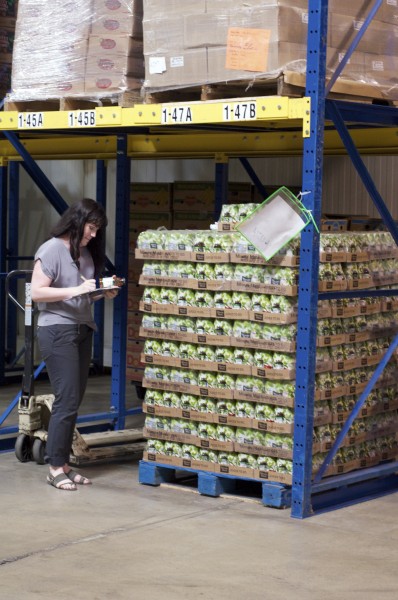When you talk about influence in Central Texas food, it’s hard to get bigger than the Capital Area Food Bank. The 30 year-old organization provides more than 25 million pounds of food each year to residents of Central Texas, in a service area covering 19,064 square miles. That’s 48,000 people receiving food assistance every week, 20,000 of them children.
Besides providing groceries to those in need, the food bank (CAFB) also teaches them about eating well. Registered Dietician Angela Henry leads a host of nutrition education programs at the food bank, and her work reaches thousands across Austin each year.
“It’s never too late to start eating healthier,” said Henry, describing the programs. Although the strategy for teaching a kindergartner is different from teaching the elderly, Henry’s goals remain the same: to encourage clients to make healthy choices.
Henry began at CAFB in 2006 as an intern, while she was a nutrition student at The University of Texas at Austin. She continued to work part time at the food bank as a volunteer during her practicum, and was hired full time to a position there shortly after graduation. She now serves as CAFB’s Nutrition Education Manager and supervises three full-time staff and an intern.
The aptly named “Choices” program is CAFB’s largest education initiative. In the program, Henry or another CAFB teacher travels to one of CAFB’s 350 partner agencies to teach cooking classes to clients in need. The lessons teach basic food literacy skills, like identifying food types and reading nutrition labels. Through a series of age-specific activities, teachers demonstrate safe food handling techniques and prepare healthy recipes that use inexpensive ingredients, like low-fat yogurt and whole grain cereal.
(video courtesy of Capital Area Food Bank on YouTube)
“We’ve seen the most impact in the kids’ series of classes,” said Henry. “We encourage kids to take ownership of the recipe and to become their own chef. It’s really fun in the multi-week classes, since the kids will take a recipe home and prepare it with their parents. At the next class, we hear stories about how they were able to enjoy cooking as a family.”
When she’s not in the classroom, Henry stays busy in her office at the food bank. She writes and reports grants for the Choices program, and develops new lesson plans for those classes. She helps promote CAFB’s nutrition education programs by contributing healthy recipes and other content to the food bank’s newsletters for donors and partner agencies. She also manages nutrition for the CAFB Kids Cafe and Summer Food Assistance programs, by designing menus that will appeal to kids and meet their nutritional needs.

Angela Henry notes nutritional information for 100% apple juice in the Capital Area Food Bank warehouse.
One of the least visible parts of Henry’s job is also the farthest reaching since it impacts the food choices of every one of CAFB’s clients. The “Choose Healthy Options Program,” CHOP for short, helps partner agencies choose nutritious products for their clients. As part of the nutrition education team, Henry and her colleagues catalogue each item in the CAFB inventory and rank it on the nutrition scale from 1-3. Healthy foods like 100% juice are given a score of 1, while foods with less nutritional value are scored lower.
Rankings appear alongside food selections on the CAFB inventory system, so that food pantries and the like can select balanced options for their clients without analyzing every food label for themselves. The CHOP program also influences the food bank’s purchasing department to buy the healthiest items, so that every dollar CAFB spends of food yields the highest nutritional return possible.
“Of course we’re here to offer food assistance.” Henry said, “We also want to help people make healthier food choices.”
